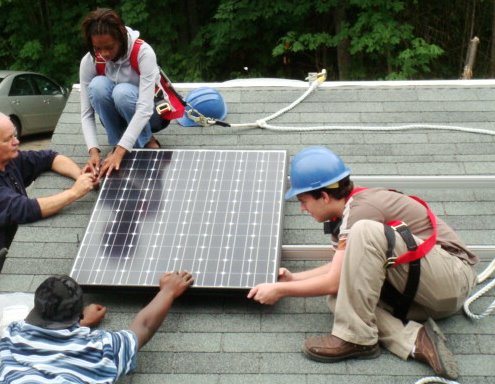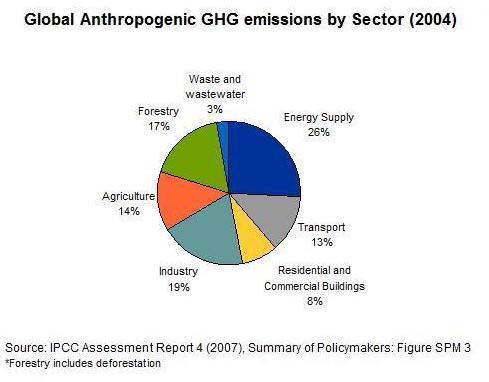Part of building a successful business is having an educated and trained workforce. Most businesses take this into account when setting up their headquarters. Ideally, you want to be located next to some bright minds. It’s no coincidence that some of the best technology firms start up in Silicon Valley. These companies are trying to attract some tech-savvy people.
This is what we call human capital and it is essential to a successful business. You could have the greatest business plan in the world, the financing, and the market, but if you are lacking in human capital to make your business function properly, it will flop.
Furthermore, whole sectors of the economy cannot develop or grow without this human capital. In recent months, probably because of President Obama’s committment to combatting climate change, we have been hearing about building a green economy, investing in alternative sources of energy, and building more energy efficient automobiles. Sounds great. But who will actually do the work to make this happen? The government can talk, and outline plans, and allocate money all it wants, but if we lack trained workers to actually carry out the plan, nothing will get done. Who will install the solar panels on everyone’s roofs? Who will construct the millions of windmills? Who will retrofit all of our buildings to make them more energy efficient?

I came across an interesting article today on the BBC about Cerro Coso Community College in California, near the Mojave desert. It’s a place where the wind blows hard, and because of that CC Community College has a program to train workers to install wind turbines. The students pay about $1,000 for the course, and are almost guaranteed a job in the wind industry after graduation. These are the green jobs of the future that President Obama wishes to create.
Also, there is the East Los Angeles Skills Centre, an institution training workers who either lost their jobs or who are ex-cons and ex-gang members to install solar panels. These jobs are highly skilled. Workers need to know how to install the solar panels, and wire them. Trainees will also almost certainly be hired for a job after completion of the course. These are also the green jobs of the future.
President Obama and Governor Schwarzenegger want to create more of these green jobs. Obama has ensured funding through the recent stimulus plan, and Governor Schwarzenegger will use that money for his new California Green Corps, a program to train youth in these new green jobs. The green industry is booming. The problem is not the political will or even the funding, but the lack of human capital is preventing this industry from exploding. There aren’t enough universities or trade schools to train workers in these fields. These courses are fully enrolled and have a waiting list.

A lot of Americans tend to think of manual labor as a low-end job. This has contributed to a decline in U.S. manufacturing. But the green industry is the next big boom in manufacturing, and thus, the next big boom in jobs. If the U.S. doesn’t take the lead, another country will. If the green industry takes off, it will be because there are more institutions such as the Cerro Coso Community College and the East Los Angeles Skills Centre.




 Wal-Mart now has solar panels on a few of its locations, they sell fair-trade coffee, they are buying wind energy to supply hundreds of its locations in Texas, and has donated $5.7 million to supporting green job creation in the US. There has been no shortage of public pressure and outrage directed at Wal-Mart for all of its sins. But if Wal-Mart can alter its carbon footprint, clean up their operations, huge progress can be made.
Wal-Mart now has solar panels on a few of its locations, they sell fair-trade coffee, they are buying wind energy to supply hundreds of its locations in Texas, and has donated $5.7 million to supporting green job creation in the US. There has been no shortage of public pressure and outrage directed at Wal-Mart for all of its sins. But if Wal-Mart can alter its carbon footprint, clean up their operations, huge progress can be made. 




 They are some of the tallest and oldest trees on Earth, often over 5,000 years old. Historically, in Chile these trees were chopped down and used for wood, and because the wood was of high quality, it was often used to build houses. But, the Chilean government outlawed the cutting down the Alerces. Ulaa is located near these trees and it provides a unique opportunity to visit them. For volunteers on the farm (read the post about volunteering in
They are some of the tallest and oldest trees on Earth, often over 5,000 years old. Historically, in Chile these trees were chopped down and used for wood, and because the wood was of high quality, it was often used to build houses. But, the Chilean government outlawed the cutting down the Alerces. Ulaa is located near these trees and it provides a unique opportunity to visit them. For volunteers on the farm (read the post about volunteering in 





